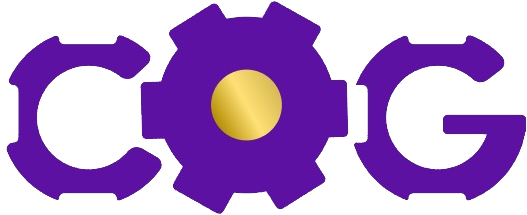Navigating difficult conversations, whether online or in person, can be a daunting task. Each mode of communication presents its own set of challenges and advantages. As we increasingly rely on virtual platforms for personal and professional interactions, mastering the art of handling tough discussions in both settings becomes crucial. This blog aims to explore strategies that can help you handle challenging conversations effectively, regardless of the medium. From understanding the unique dynamics of online and in-person communication to practical tips for ensuring clarity and empathy, we’ll equip you with the tools you need to turn every difficult conversation into an opportunity for growth and understanding.
Challenges of Difficult Conversations
Online Environment
Navigating tough discussions online presents unique challenges that can complicate communication. For starters, the lack of physical presence makes it difficult to read body language or pick up on subtle nonverbal cues, often leading to misunderstandings. Without these cues, it’s tough to gauge the mood or feelings of the other person, which can result in responses that may seem overly blunt or otherwise inappropriate. Additionally, the asynchronous nature of many online communications – such as emails or messaging apps – means responses can be delayed, which might cause anxiety or allow tensions to escalate in the absence of immediate clarification. Furthermore, the permanence of written communication can be daunting; once something is typed and sent, it cannot be taken back, adding an extra layer of caution and occasionally hesitation during exchanges.
In-Person Settings
Conversely, addressing tough topics in person also comes with a set of challenges, albeit different from those encountered online. Physical confrontations can escalate quickly due to emotional reactions that are harder to control face-to-face. The intensity of in-person interaction can pressure individuals into uncomfortable confrontations, sometimes even before they have had an opportunity to fully think through their responses. Additionally, in-person settings often require immediate responses, leaving less time to carefully consider the best approach to a conversation. However, the immediacy of this setting also allows for quicker resolution to conflicts and misunderstandings, as individuals can immediately clarify and adjust their gestures, tone, and expressions in real time to better suit the conversation’s flow.
Importance of Effective Communication
Building Trust and Understanding
Effective communication forms the backbone of building trust and understanding, vital components in any relationship – whether professional or personal. In difficult conversations, expressing oneself clearly and listening actively can help all parties involved understand differing viewpoints without misinterpretation. This mutual understanding is crucial, as it lays the foundation for trust. When people feel understood, they are more likely to open up and share honest thoughts and feelings, which, in turn, strengthens trust. Moreover, clear communication helps to ensure that all individuals can express their needs and concerns without fear of judgment or retaliation, thereby fostering a safer environment where trust can thrive.
Modeling Positive Communication
Effective communication is not just about navigating tough topics; it’s also about modeling behavior that encourages constructive interaction. When people communicate effectively, they set the stage for open, honest, and respectful discourse. This can significantly impact how conflicts are handled and resolved in any setting. By actively demonstrating positive communication habits like patience, empathy, and assertiveness, individuals can influence others to respond in kind, leading to more productive and meaningful exchanges. Over time, these positive interactions build stronger, more resilient relationships that can withstand the challenges of misunderstandings and conflicts.
Strategies for Handling Difficult Conversations Online
Active Listening Techniques
In virtual conversations, active listening can be challenging but it’s crucial for understanding and resolving conflicts. Essential techniques include paraphrasing what the other person has said to confirm understanding, asking open-ended questions to encourage them to elaborate, and avoiding interruptions while they are speaking. It’s also helpful to summarize the key points at the end of their remarks to ensure clarity and agreement on the discussion topics. These tactics not only demonstrate attentiveness but also help keep the conversation focused and productive.
Setting Clear Objectives
Before entering any challenging online discussion, establish clear goals. What exactly do you hope to achieve from the conversation? Having a clear, realistic objective can guide the flow of dialogue and prevent the conversation from deviating into less productive areas. It’s wise to communicate these objectives at the beginning of the conversation, so both parties are aligned and can work collaboratively towards a common end.
Using Empathy and Respect
Empathy is about more than understanding someone’s feelings— it’s showing you genuinely care. In an online setting, convey empathy by acknowledging the challenges or issues the other person is expressing, even if you don’t agree with their perspective. Always maintain a tone of respect, using polite language and avoiding derogatory remarks. Remember, the goal is to resolve a conflict, not win an argument. Ensuring your words and tone convey respect can significantly influence the direction and outcome of the conversation.
Strategies for Handling Difficult Conversations In-Person
 Image courtesy: Unsplash
Image courtesy: Unsplash
Non-verbal Cues and Body Language
Non-verbal communication can often tell you more than words during in-person interactions. Pay close attention to your own and the other person’s body language, facial expressions, and eye contact. Positive non-veral cues such as nodding, maintaining an open stance, and occasional smiles can make the environment more conducive to open and honest dialogue. Conversely, crossed arms, lack of eye contact, and frowns can create barriers that may add tension to the discussion.
Managing Emotions
In-person conversations can quickly become intense. It’s vital to keep your emotions in check to avoid escalation. Techniques such as taking deep breaths, pausing before responding, and speaking in a calm, steady voice can help manage emotional reactions. If you feel the conversation is getting too heated, it’s perfectly acceptable to suggest a short break to allow everyone involved a moment to compose themselves before continuing.
Creating a Safe Environment
Establishing a safe, neutral environment is essential for effective dialogue during challenging in-person conversations. Choose a quiet, private space where both parties feel secure and free from interruptions. Begin the conversation with affirmations or common goals to set a positive tone. Throughout the discussion, emphasize collaboration and the pursuit of mutual benefits or resolutions. This approach can reduce defenses, making it easier to find common ground and work through difficult issues together.
Comparison: Online vs In-Person Conversations
Pros and Cons
When it comes to navigating difficult conversations, the medium you choose can significantly impact the dialogue. Online conversations offer the advantage of time. You have a moment to pause and think before you respond, which can be crucial in managing a sensitive topic. Additionally, the physical distance can sometimes reduce the stress associated with face-to-face confrontations. However, online interactions often lack non-verbal cues like facial expressions and tone of voice, which can lead to misunderstandings.
In contrast, in-person conversations allow for immediate feedback and adaptation based on visual and auditory cues. This can lead to a more nuanced understanding and quicker resolution of conflicts. However, in-person discussions can also be more intimidating and may result in heightened emotions due to the direct nature of the communication.
Which is More Effective?
Determining which mode of communication is more effective depends largely on the context and the individuals involved. Online conversations might be preferable in situations where a cooling-off period is beneficial, or when geographic distance makes in-person meetings impractical. On the other hand, in-person communication is likely better for complex or highly emotional topics where misunderstandings could escalate without the benefits of direct interaction.
Tips for Improving Communication Skills in Any Setting
 Image courtesy: Unsplash
Image courtesy: Unsplash
Practice Reflective Listening
Reflective listening is a communication strategy that involves actively listening to the speaker and then reflecting or paraphrasing what has been said to confirm understanding. This technique not only promotes clarity but also helps the speaker feel heard and valued. Here’s how to practice reflective listening:
– Focus fully on the speaker, avoiding distractions.
– After they speak, repeat in your own words what they’ve said to ensure you’ve understood.
– Ask clarifying questions if needed.
This approach can be beneficial both online and in person, as it encourages a thoughtful and engaged conversation.
Seek Feedback
Feedback is essential for growth in communication. After a discussion, especially a challenging one, ask for feedback on how the conversation went and how you can improve. This could be about how clear your points were, how effectively you listened, or how you managed your emotions. Receiving and acting on feedback is a powerful way to enhance your communication skills continuously, regardless of the setting.
Adapt Communication Style
Different situations and different people may require you to adapt your communication style. For example, some may prefer direct and concise information, while others might appreciate a more detailed and empathetic approach. Paying attention to the cues others give and adjusting your communication style can greatly improve the effectiveness of your interactions. Here are a few ways to adapt:
– In high-stress situations, keep your responses simple and clear.
– Use affirmations and supportive language when discussing sensitive or emotional topics.
– Adjust your pace and tone based on the reaction of the other person, speeding up or slowing down as needed.
By understanding and implementing these strategies in both online and in-person settings, you can become a more effective communicator regardless of the medium.
Navigating difficult conversations, whether online or in-person, requires patience, understanding, and strategic communication skills. By embracing the unique advantages and addressing the challenges of each medium, you can engage in more productive and less stressful discussions. Remember, the goal isn’t to win an argument but to foster a mutual understanding and respect, helping to build stronger, more effective relationships in every sphere of your life. Keep practicing, and over time, navigating these conversations will become a more natural and empowering part of your communication repertoire.




 Image courtesy:
Image courtesy:  Image courtesy:
Image courtesy: 
 Image courtesy:
Image courtesy:  Image courtesy:
Image courtesy: 
 Image courtesy:
Image courtesy:  Image courtesy:
Image courtesy: 
 Image courtesy:
Image courtesy:  Image courtesy:
Image courtesy: 

 Image courtesy:
Image courtesy: 

